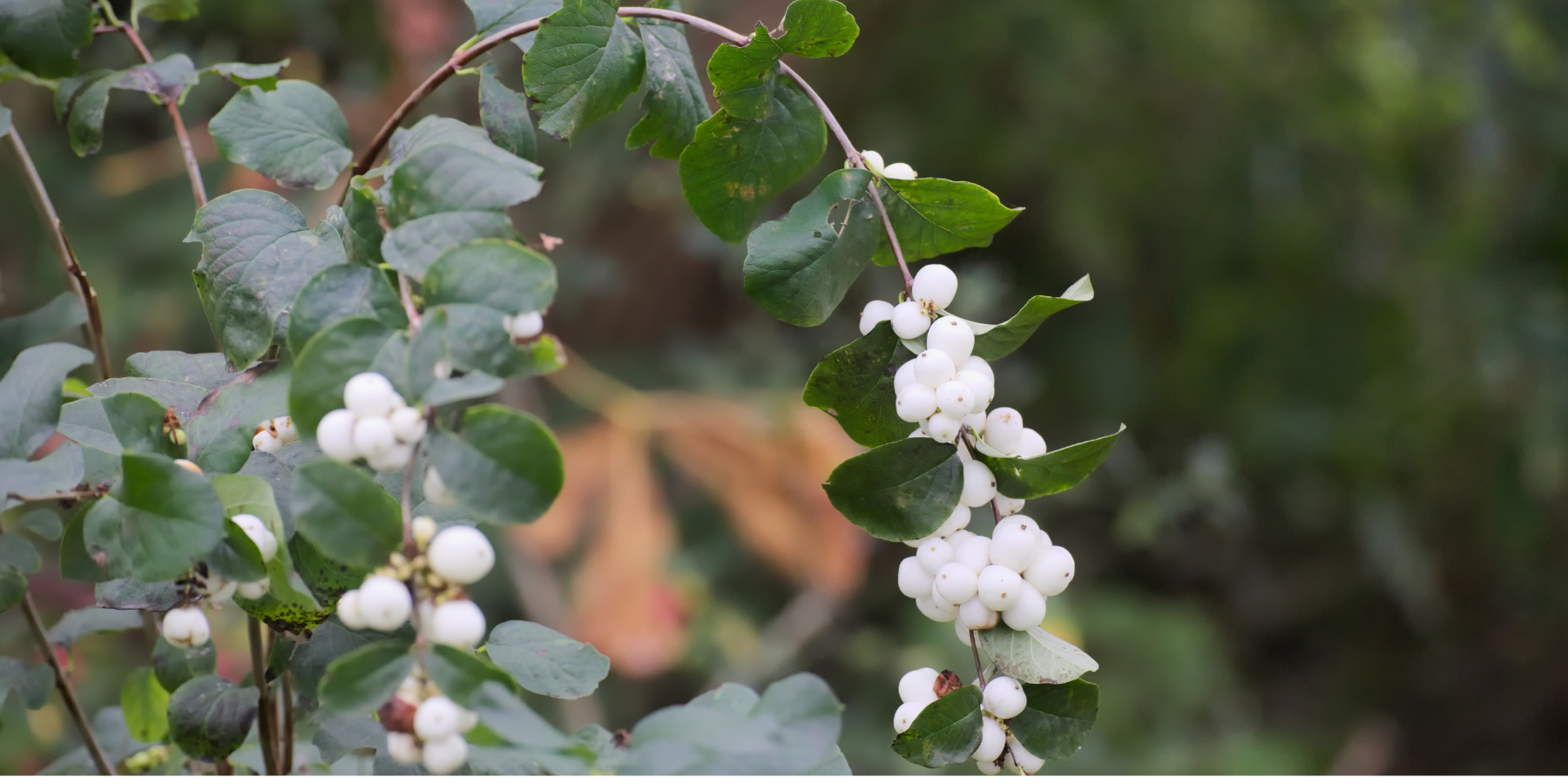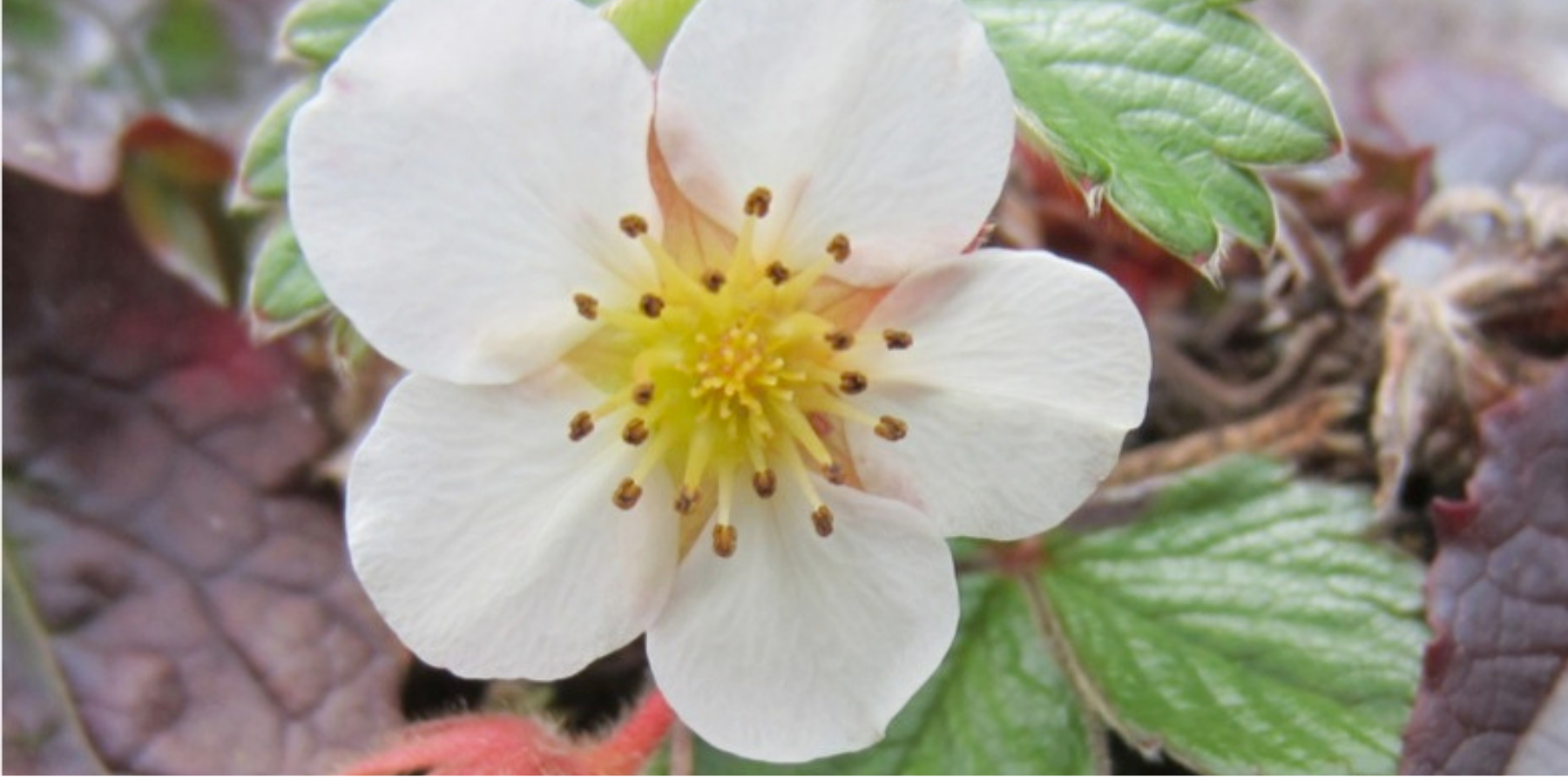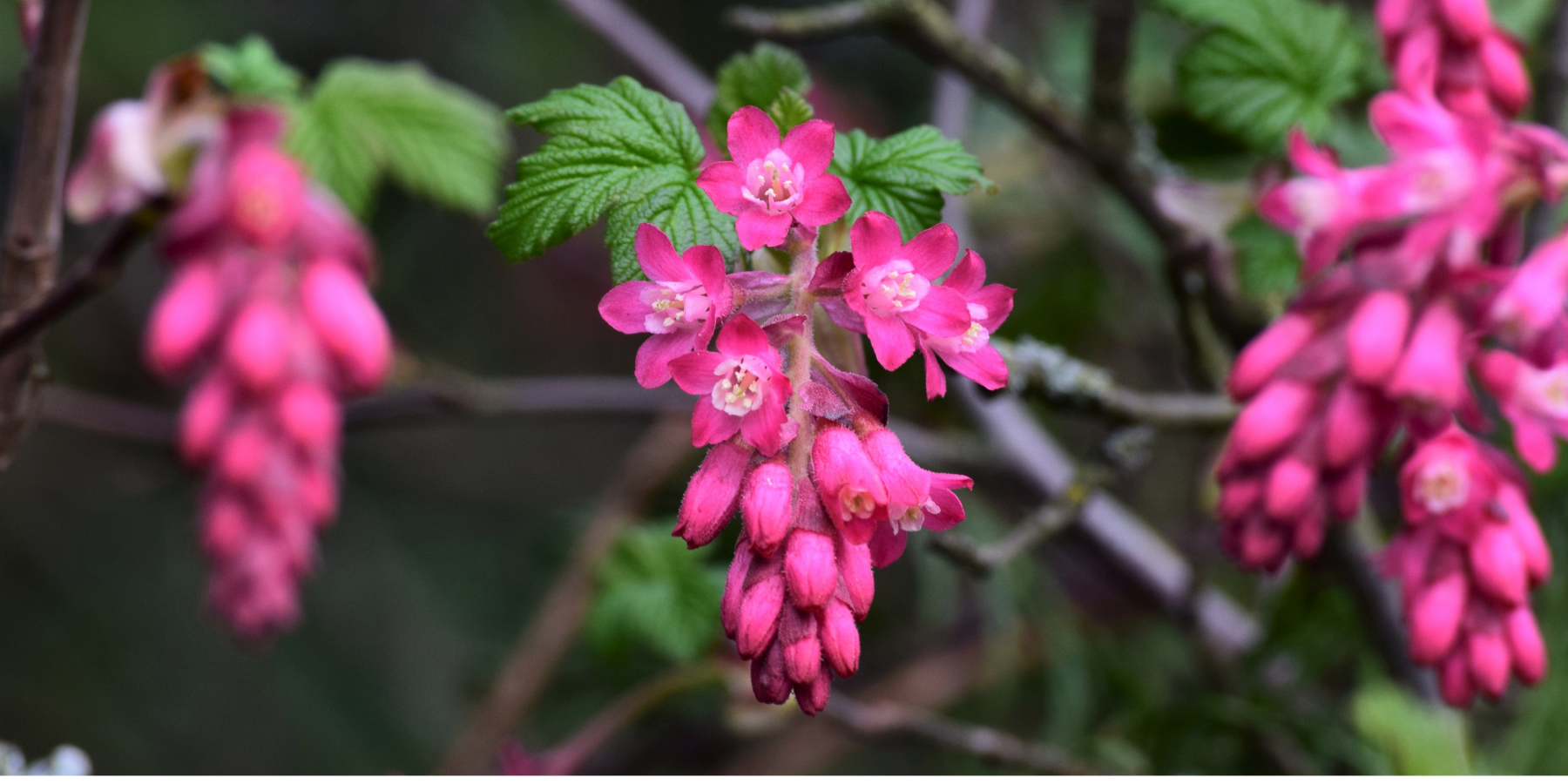How to Care for Native Plants
Growing plants can be a great addition to one’s backyard, but taking care of them can be a real hassle. Here is a little guide on how to care for seven native plant species that are part of our Youth Led Native Garden. Stop by Mackin House to see the garden today.
Our Youth Led Native Garden is a collaborative project between Coquitlam Heritage, Fresh Roots and the Suwa'lkh School Leadership Class. Learn more about the project here.
Snowberry
Snowberries can be grown in most standard soils, growing best sat in the full sun, or partial shade with autumn being the most ideal time to plant these white balls. They tend to grow from 0.5 to 2 meters tall, growing in clusters. As for all, make sure to keep this plant watered and healthy to ensure quality blooming in early summer. A watering session should occur once a week with an amount of about an inch, although, after it has been established, it can go longer between watering sessions without needing as much. Granular, liquid, or stake type fertilizers are optional, but if used would greatly assist in the increase of both the size and the number of flowers on the end of the plant. The snowberry is a useful plant to pollinators and attracts many insects such as bees and several birds including hummingbirds like Annas and rufous. Birds and bunnies can also utilize the plant for cover, hiding and nesting spots.
Nodding Onion
The Nodding Onion prefers to grow in a well-drained soil in the full sun. It is a very resilient plant that thrives in what others would call difficult sites like hot sun or gravely soil. Ensure at least 3 to 4 hours of sun light a day. The Nodding Onion makes it suitable for any type of gardener as it requires little to no water throughout its thriving season when it has been established. However, once the plants have matured, they are harvested individually by snipping the plants with scissors and will re-grow for several more harvests throughout the season. Since this plant produces flowers, adding a phosphorus-rich fertilizer that comes in a granular or liquid form will most likely be the best approach as it helps the process of photosynthesis and is linked to the plant’s ability to use and store energy. One of the benefits of this plant is being a moth repellent. Its juice can also be applied to one’s skin as a repellent from mosquitos and other bugs. The Nodding Onion when mixed with hot water is able to make a soft, moist material that can treat respiratory issues.
Yarrow
A Yarrow plant grows best in an area that can receive full sunlight but can also grow in partial sun or shade. The plant thrives in daringly hot conditions like hot and dry conditions; however, the plant will not survive in forever wet soil – extreme rain conditions – or frosty, snowy, and cold conditions. This plant grows to be yellow, red, pink, or any shade in between usually grow from 2 to 4 feet in height. These beautiful yellow flowers attract butterflies, while keeping it pest and drought resistant. However, although being resilient to droughts, receiving less than an inch of rain a week in the summer might not be healthy for the plant, so be sure to water them when the soil has dried out – around once a week without rain. Yarrows are usually low maintenance and need little to no fertilizer. If you do end up using fertilizer, some organic compost might just do the trick or applying a slow-release fertilizer once a year in the early spring.
Pacific Ninebark
Pacific Ninebark prefers well-drained soil and can tolerate a range of soil types, including clay, loam, and sandy soil. The best time to prune Pacific Ninebark is during late winter or early spring, before new growth begins. Pruning should be done to maintain the shrub's shape, encourage new growth, and remove dead or damaged branches. In addition, consider removing about one-third of the oldest stems each year to stimulate new growth and keep the shrub looking healthy.
Once established, Pacific Ninebark is relatively drought-tolerant and can handle periods of dryness. However, it is still a good idea to water during prolonged dry spells, especially in hot weather. Watering is essential during the establishment phase (first 1-2 years) to help the shrub develop a strong root system. Water regularly to keep the soil consistently moist but not waterlogged. In addition, applying a layer of mulch around the base of the shrub will help conserve moisture, suppress weeds, and improve soil quality. Pacific Ninebark typically doesn't require heavy fertilization. In most cases, it can thrive with the nutrients available in the soil. If the soil is lacking in nutrients or the shrub is showing signs of poor growth, applying a balanced, slow-release fertilizer in the spring will help.
Kinnikinnick
Taking care of Kinnikinnick is relatively simple, and it can thrive with minimal attention. Kinnikinnick prefers well-drained, sandy or gravelly soil. It can tolerate poor soil conditions but does best in well-draining soil. While it can tolerate some shade, it will grow more vigorously in full sun.
Kinnikinnick does not typically require much pruning. However, you can trim it to shape it or remove dead or diseased branches in the spring if needed. Likewise, Kinnikinnick does not need regular fertilization. In fact, it often does better in nutrient-poor soils. If you do fertilize, use a balanced, slow-release fertilizer sparingly in the spring.
Kinnikinnick is drought-tolerant once established. Water it regularly during the first growing season to help it establish its root system. After the initial establishment period, only water Kinnikinnick sparingly. It can tolerate dry conditions and does not require frequent watering. Applying a layer of mulch around the base of the plant can help retain soil moisture and reduce weed competition. Organic mulch, like wood chips or pine needles, is an ideal choice. Kinnikinnick is a favorite of wildlife, particularly birds, who enjoy its small red berries. Remember that once established, Kinnikinnick is a relatively low-maintenance plant. It often thrives in neglect, making it an excellent choice for xeriscaping and naturalized areas.
Coastal Strawberry
Coastal strawberries should always be planted in a location that receives partial to full sunlight. It prefer well-draining, slightly acidic soil. You can amend your soil with organic matter like compost or well-rotted manure to improve its texture and fertility.
Keep the soil consistently moist, but not waterlogged. Water deeply and evenly, providing about 1-2 inches of water per week. Fertilize your coastal strawberries with a balanced, slow-release fertilizer in the spring when new growth begins. Remove any damaged or dead leaves, as well as spent fruiting stems, to encourage new growth and prevent disease. Use bird netting to protect your berries from birds and consider placing a row cover to shield your plants from strong winds if you are in a windy coastal area. Consider planting companion plants like chives or garlic to help deter pests.
Coastal strawberries can be susceptible to diseases like powdery mildew and botrytis. Make sure the plants have good air circulation and avoid overhead watering to prevent these issues. Harvest the berries when they are fully ripe. Coastal strawberries have a short shelf life and are best enjoyed fresh.
Red Flowering Currant
Red flowering currant is a beautiful, deciduous shrub that produces vibrant red or pink flowers in the spring. Red flowering currants prefer slightly acidic to neutral soil. Plant it in the fall or early spring, and make sure it has enough space to grow.
During the growing season (spring through summer), water the plant regularly, keeping the soil consistently moist but not waterlogged. Water deeply to encourage deep root growth. In the winter, you can reduce the frequency of watering.
Pruning should be done in late winter or early spring before new growth begins. Red flowering currant can be pruned to shape and remove dead or weak branches. This promotes healthy growth and an attractive form. Red flowering currants generally do well without much additional fertilizer. However, if your soil is deficient, you can apply a balanced, slow-release fertilizer in the spring. Avoid over-fertilizing, as this can lead to excessive foliage growth at the expense of flowers.
In windy areas or if your plant becomes top-heavy with foliage and flowers, consider staking or tying it to provide support and prevent breakage. Removing spent flowers can encourage more blooming and help keep the plant looking tidy. This is especially helpful if you want to maximize the flowering display. With the right care, red flowering currant can provide beautiful blooms and habitat benefits for many years.
Our Youth Led Native Garden is a collaborative project between Coquitlam Heritage, Fresh Roots and the Suwa'lkh School Leadership Class. Learn more about the project here.







